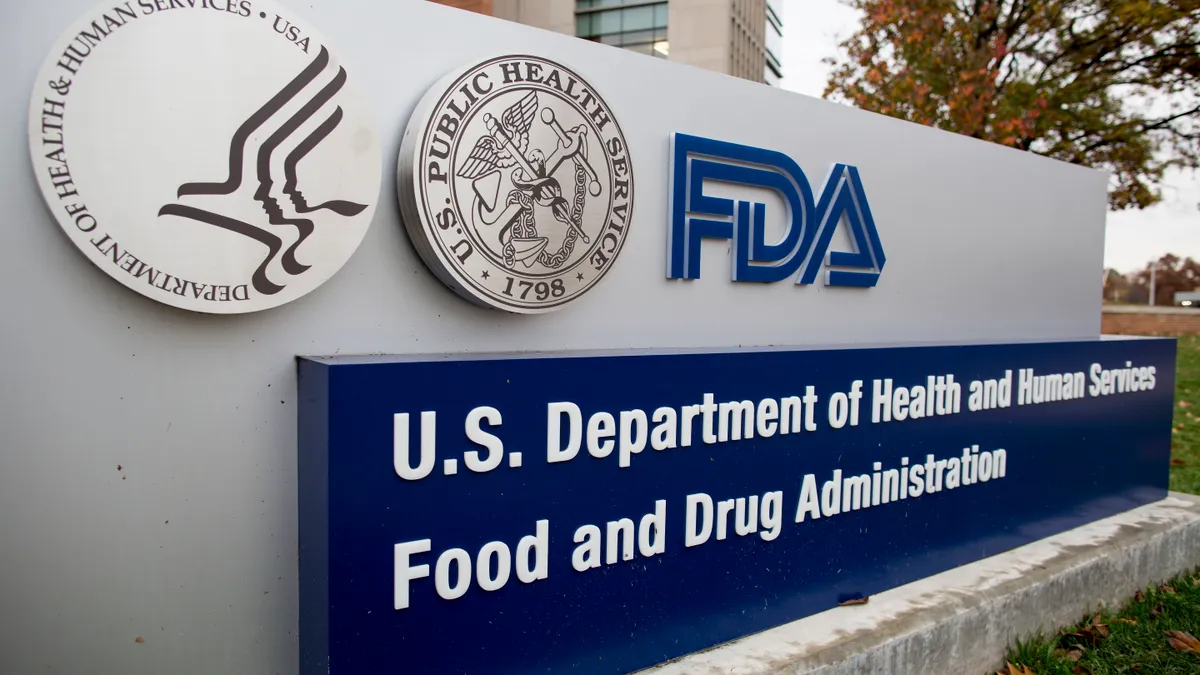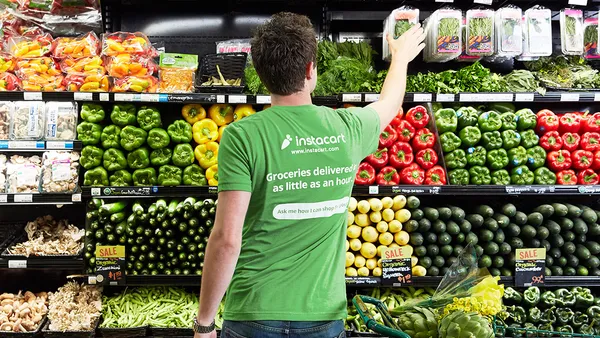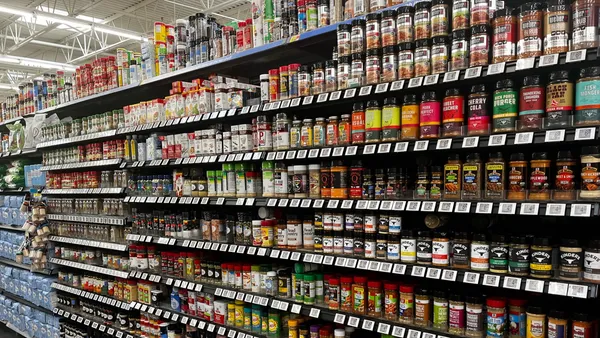Dive Brief:
- The FDA believes tech-enabled traceability, using smarter tools for prevention and outbreak response, taking advantage of new business models, and strengthening a culture of food safety will reduce the number of U.S. foodborne illnesses, Commissioner Stephen Hahn announced in the agency's New Era of Smarter Food Safety Blueprint, released this week.
- The blueprint is a 10-year framework for food safety that builds on the Food Safety Modernization Act (FSMA). The plan describes how the government and industry will use technology to add to FSMA with the goal of reducing the number of cases of foodborne illness. A public meeting and input from safety experts, different sectors of the food industry, federal and state regulators and a review of other laws provided information to draft the document.
- "The blueprint we release today represents the next stage in this process — a commitment we are making to the American people that we will work as fast and effectively as we can ... to help ensure that we have the safest food system in the world," Hahn said in remarks on Monday. "And we'll do this in part by incorporating the use of the most modern technologies that are already in use in society and the business sector."
Dive Insight:
When FSMA became law in 2011, it brought sweeping change for the food industry. The law laid out seven rules that encompassed a host of regulations that manufacturers were required to adopt on a rolling basis. Although it has rolled out slowly, nearly a decade later, the framework has been updated to incorporate a more digital-minded, proactive approach.
This new set of guidelines, which were delayed by four months due to the pandemic, revolve around four core principles that require the use of digital tools and new technologies like blockchain, end-to-end traceability, e-commerce, big data and predictive analytics to modernize food safety. One of the pilot initiatives that the FDA is conducting is an artificial intelligence and machine learning review of imported foods at U.S. ports of entry. The AI will model historical shipment data to assist with product screening and determine if products meet U.S. food safety standards.
Food manufacturers and experts have been pushing for blockchain technology and interactive packaging for years in order to increase supply chain traceability and give consumers more insight into their products’ origins. While many major retailers, including Albertsons, and companies, such as Nestlé, have adopted such technologies, many are still behind in their use.
The FDA wants to use this plan to encourage more widespread adoption of these technologies by incentivizing the creation of solutions with low- and no-cost, enabling food producers of all sizes to participate. Additionally, the FDA said it will implement an internal digital technology system to track data elements from industry and regulatory partners.
The blueprint also addresses business models that didn't exist when FSMA was passed, but are common today. It includes setting several standards for food delivery safety, providing training for those who do food delivery as well as creating educational materials for consumers about the safety of foods that are delivered. It also outlines plans to work with retailers, reviewing the effectiveness of current ways they try to prevent foodborne illness and working with them on effective facility design.
Recently, the FDA has turned to technology to further its food safety goals. Last fall, it unveiled its new dashboard to measure progress and track compliance of companies with FSMA. However, the data lacks granularity showing where recalls have occurred and for what reasons, making the dashboard more useful for government agencies and manufacturers than consumers. The blueprint cites plans to improve on this, exploring the use of different technology to get recall information to consumers and creating an app to be a resource recall information.
In a conference call following the release of the blueprint, Frank Yiannas, deputy commissioner for food policy and response, told reporters end-to-end product traceability for consumers is one of the major goals of the plan. He suggested the agency is looking at technologies that make it possible to scan a bag of lettuce and immediately know where it came from, or sending consumers a text message to let them know if something they purchased was the subject of a recall.
Recalls were the impetus behind the implementation of FSMA. However, in spite of the FSMA’s stringent rules that favored preventative approaches to food safety, foodborne illness has continued to plague farmers and manufacturers. Reports from 2017 indicated a spike in recalls. However, that year, Food Safety News reported that 43% of all FDA food recalls had been due to undeclared allergens rather than salmonella, E. coli or listeria.
Many in the industry praised the blueprint. Food Industry Association President and CEO Leslie Sarasin in a statement applauded the FDA for bringing technology to the forefront with this plan.
“Within the food industry, we continue to witness how rapidly business models are changing; any new frameworks should be broad in nature and be adaptable with evolving business practices," Sarasin said. "It’s critical that this new plan focuses on outcomes; leverages existing tools; increases communications with and among stakeholders; accounts for our variable resources and abilities; and provides uniformity that amplifies success."
Looking at how slow the rollout of FSMA has been, it begs the question how quickly this new framework will be adopted by manufacturers. Since the initial compliance deadlines began to hit in 2016, the FDA has slowly required more manufacturers to develop their recall plans and assess all possible food safety risks with data and meticulous records to back up their plans.
However, FSMA is not geared toward communicating with individual consumers about the safety of the food they pick up every week. This new set of plans might change that by encouraging companies to develop digital tools that provide insight to their supply chains for consumers.













